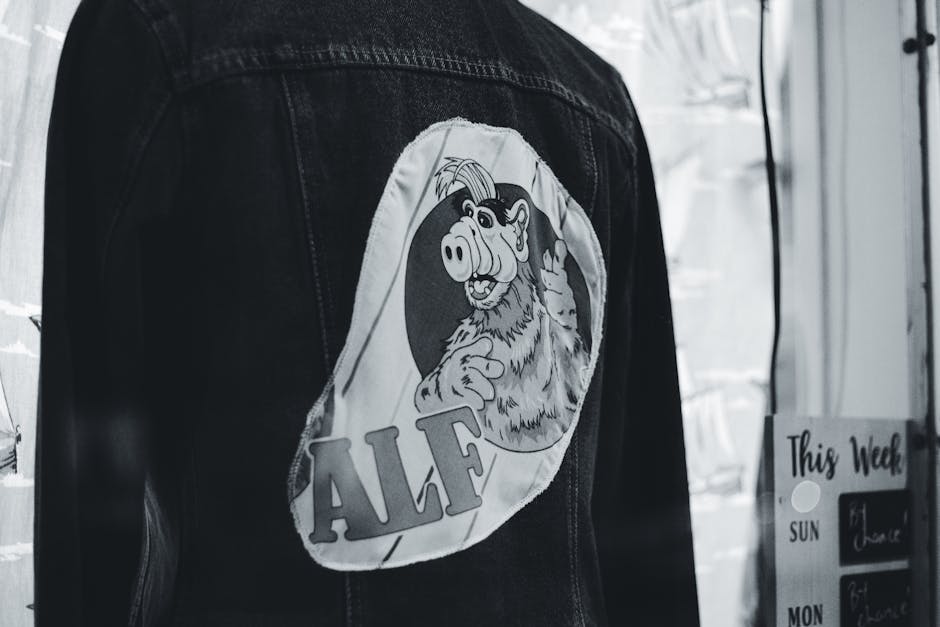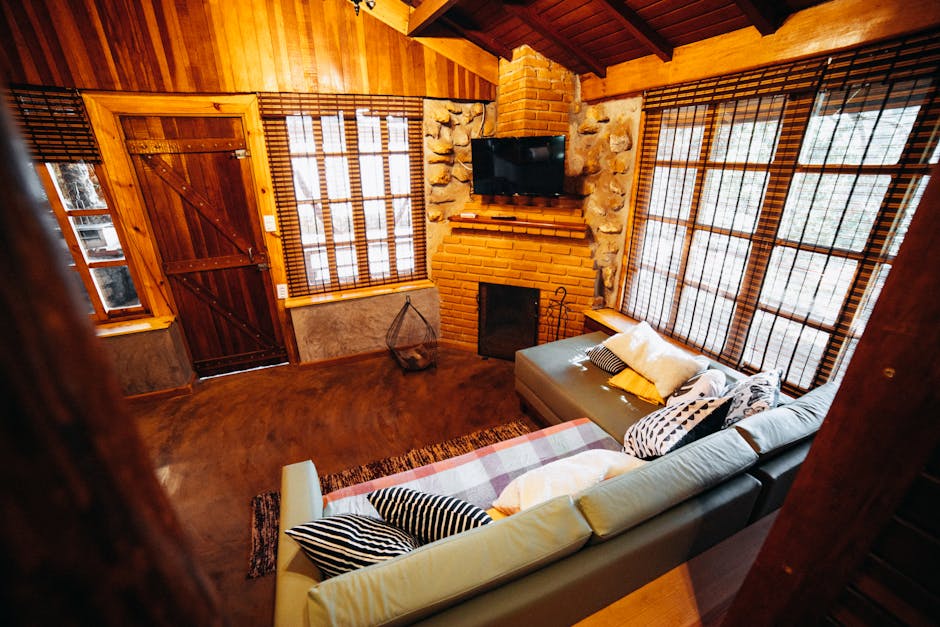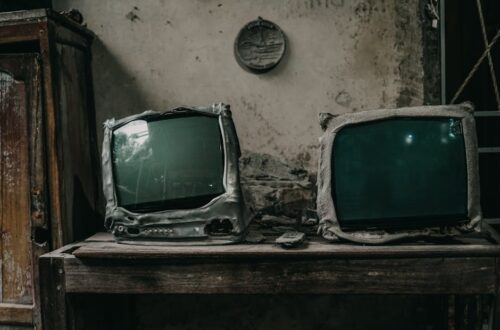The 80s TV shows era represents a golden age of television that continues to evoke powerful nostalgia decades later. This period introduced viewers to iconic family sitcoms, groundbreaking dramas, and adventure series that would shape television for generations to come. From the wholesome family dynamics of Growing Pains to the fish-out-of-water comedy of The Fresh Prince of Bel-Air, these shows captured the cultural zeitgeist of the time while delivering entertainment that remains remarkably watchable today.
What made 80s television so special wasn’t just the big hair and neon fashion—it was the perfect blend of heartwarming storylines, relatable characters, and innovative concepts that pushed the boundaries of what TV could accomplish. These shows arrived during a unique cultural moment when television was the central entertainment medium for most families, creating shared experiences that united viewers across America each week.
Family Sitcoms That Defined a Generation

Photo by Erik Mclean on Pexels
The 1980s and early 1990s represented the golden age of family sitcoms, with shows that perfectly balanced humor with heartfelt moments. Growing Pains, which aired from 1985 to 1992, stands as one of the decade’s most beloved family shows. Starring Alan Thicke and Joanna Kerns as the parents of the Seaver family, with Kirk Cameron as their troublesome teenage son Mike, the show captured the everyday challenges of raising a family with warmth and humor.
What made Growing Pains particularly special was its ability to tackle serious issues while maintaining its lighthearted tone. The show’s opening sequence featuring family photos and its memorable theme song, “As Long As We’ve Got Each Other,” perfectly encapsulated the show’s emphasis on family bonds. Even as Kirk Cameron’s real-life conversion to Christianity created behind-the-scenes challenges for the writers, the show maintained its quality and connection with audiences.
Another standout from this era was Full House, which premiered in 1987 and followed the unconventional family arrangement of widower Danny Tanner raising his three daughters with the help of his brother-in-law and best friend. The show’s premise might have seemed unusual, but its emphasis on found family and the importance of support systems resonated deeply with viewers. Full House became a cultural phenomenon, launching the careers of the Olsen twins and creating a template for family sitcoms that would be followed for years to come.
The Cosby Show, despite its complicated legacy today, revolutionized the family sitcom format with its portrayal of an upper-middle-class African American family. The show broke ground not just in its representation but in its sophisticated humor and willingness to address real issues facing families. Its success paved the way for shows like A Different World, which spun off from The Cosby Show in 1987 and focused on college students at a historically Black university, offering viewers a glimpse into young adult life with both humor and substance.
Unconventional Family Dynamics on Screen

Photo by Suraphat Nuea-on on Pexels
The 80s and early 90s television landscape was rich with shows that explored non-traditional family structures, reflecting the changing dynamics in American households. Silver Spoons, which aired from 1982 to 1987, featured a wealthy businessman learning to be a father to the son he never knew he had. The show’s appeal went beyond its premise—the mansion setting with its impressive toys and gadgets captured the imagination of young viewers, creating a fantasy world where train sets could run through living rooms and arcade games lined the walls.
Webster, another beloved series from this era, premiered in 1983 and ran for six years. The show centered on a young African American boy adopted by a white retired football player and his socialite wife after the boy’s parents died in a car accident. While the premise could have been handled poorly, Webster approached its subject matter with sensitivity and heart. The show was particularly memorable for its portrayal of a loving cross-racial adoption and for the creative ways the Papadopolis family adapted their home to accommodate Webster’s small stature.
My Two Dads offered another take on unconventional families, with its story of two men sharing custody of a teenage girl who could be the daughter of either one. The show tackled the challenges of co-parenting and blended families with humor and insight. Similarly, Major Dad, which premiered in 1989, explored the dynamics of a by-the-book Marine officer who marries a liberal journalist and becomes stepfather to her three daughters. The show’s fish-out-of-water premise provided plenty of comedic opportunities while also showing the growth of a blended family learning to understand each other.
Empty Nest, a spin-off from The Golden Girls that began in 1988, took yet another approach to family dynamics by focusing on a widowed pediatrician whose adult daughters move back home. The show captured the reality of adult children returning to the nest, a situation that many families were experiencing as economic realities shifted in the late 80s. Its memorable episodes, including the often-referenced “Hamburger Helper episode,” created shared cultural touchpoints for viewers who saw their own family dynamics reflected on screen.
Breakout Stars and Cultural Icons

Photo by Product School on Pexels
The television landscape of the 80s and early 90s launched numerous actors into superstardom, creating cultural icons whose influence extended far beyond their original shows. Perhaps no show better exemplifies this phenomenon than The Fresh Prince of Bel-Air, which premiered in 1990 and transformed Will Smith from a successful rapper into one of Hollywood’s biggest stars. The fish-out-of-water comedy about a street-smart teenager from Philadelphia moving in with his wealthy relatives in Bel-Air resonated with audiences of all backgrounds.
The Fresh Prince’s appeal lay not just in Smith’s natural charisma but in the show’s ability to balance comedy with thoughtful explorations of class, race, and family dynamics. Episodes like the famous reunion with Will’s father showcased the show’s dramatic range, while catchphrases and the iconic theme song became embedded in popular culture. The Carlton dance, performed by Alfonso Ribeiro, remains instantly recognizable decades later, demonstrating the show’s lasting cultural impact.
Kirk Cameron’s transformation from teen heartthrob on Growing Pains to controversial religious figure represents another fascinating trajectory from this era. As Mike Seaver, Cameron graced the covers of teen magazines and won the hearts of young viewers across America. His sudden conversion to Christianity during the show’s run created behind-the-scenes tensions as his character’s ladies’ man persona conflicted with his new personal beliefs. This transformation foreshadowed the complex relationship between celebrity, personal conviction, and public persona that would become increasingly common in the entertainment industry.
Doogie Howser, M.D., which premiered in 1989, launched Neil Patrick Harris’s career with its story of a teenage medical prodigy. The show’s premise could have been merely gimmicky, but Harris’s performance and the show’s willingness to tackle serious medical and coming-of-age issues elevated it to something special. Memorable episodes, like the one where Doogie’s girlfriend suffers an appendix attack during a date, balanced the medical drama with relatable teenage experiences, creating a unique hybrid that appealed to viewers of all ages.
Forgotten Gems: Cult Classics of the 80s

Photo by Matheus Bertelli on Pexels
While shows like Growing Pains and The Fresh Prince of Bel-Air have remained in the public consciousness through reruns and streaming services, the 80s produced numerous short-lived series that developed passionate cult followings despite their brief runs. These forgotten gems often pushed creative boundaries or arrived slightly ahead of their time, making them particularly fascinating artifacts of television history.
Tales of the Gold Monkey, which aired for just one season in 1982-1983, exemplifies this category perfectly. Set in the South Pacific in the late 1930s, the show followed Jake Cutter, a former Flying Tigers pilot running a seaplane charter business who frequently became entangled in adventures involving treasure hunts, spies, and mysterious artifacts. With his loyal one-eyed dog, mechanic, and a mysterious lounge singer named Sarah, Jake’s adventures captured the spirit of Indiana Jones-style action that was popular in cinema at the time.
What made Tales of the Gold Monkey special was its ambitious scope and production values. Each episode transported viewers to exotic islands where Jake’s trusty Grumman Goose seaplane would inevitably swoop in for daring rescues. The show’s blend of adventure, humor, and high-stakes action created an immersive experience that felt cinematic rather than televisual. Despite its short run, the series developed a dedicated following who appreciated its unique blend of period setting and adventure storytelling.
Knight Rider, while better remembered than some other shows of the era, represents another distinctive creation of 80s television. The series, which ran from 1982 to 1986, starred David Hasselhoff as Michael Knight, who fought crime with the assistance of KITT, an artificially intelligent, self-aware, and nearly indestructible car. The show’s premise perfectly captured the 80s fascination with technology and heroic individualism, creating a partnership between man and machine that would influence science fiction for decades to come.
Other short-lived series like Automan, which blended human abilities with “car-centric action,” developed cult followings despite running for just 13 episodes. These shows may not have found mainstream success during their original runs, but they represent the creative experimentation that made 80s television so vibrant and influential. Their legacy lives on through devoted fans who continue to celebrate these quirky, ambitious productions.
The Visual Aesthetic and Cultural Impact of 80s TV

Photo by cottonbro studio on Pexels
The television shows of the 1980s didn’t just entertain—they established a distinctive visual language and aesthetic that continues to influence media today. Miami Vice, which ran from 1984 to 1989, revolutionized television visuals with its cinematic production values, pastel color palette, and integration of popular music. The show’s stylish portrayal of undercover detectives working the mean streets of Miami created a template for crime dramas that emphasized mood and atmosphere as much as plot.
What made Miami Vice particularly influential was its seamless integration of music, fashion, and visual style. The show didn’t just use popular music—it made music videos an integral part of its storytelling, with extended sequences set to the biggest hits of the era. The fashion choices of detectives Crockett and Tubbs—T-shirts under linen suits, no socks, and designer stubble—became cultural touchstones that defined 80s style for many viewers. The show’s pastel color palette and neon-lit nightscapes created a distinctive look that has become shorthand for the entire decade.
Beyond aesthetics, 80s television had a profound impact on how Americans viewed themselves and their society. Shows like The Golden Girls, which premiered in 1985, challenged stereotypes about aging by portraying four older women living together in Miami as vibrant, sexual beings with full lives ahead of them. The show’s willingness to address topics like aging, sexuality, and friendship among older women was revolutionary, creating space for more diverse representations of life beyond youth.
Amazing Stories, Steven Spielberg’s anthology series that ran from 1985 to 1987, pushed the boundaries of television storytelling with its blend of science fiction, fantasy, and human drama. Each episode offered viewers a self-contained story that could be funny, scary, sad, or endearing, showcasing television’s potential for creative storytelling. The show’s impressive roster of guest stars and directors demonstrated the growing prestige of television as a medium for serious artistic expression.
Moonlighting, which aired from 1985 to 1989, broke the fourth wall regularly and played with television conventions in ways that would influence shows like Community and 30 Rock decades later. The chemistry between Bruce Willis and Cybill Shepherd as private detectives with a complicated relationship set the template for the will-they-won’t-they dynamics that would become a staple of television romances. The show’s self-awareness and meta-commentary on television itself represented a sophistication that elevated the medium in the cultural hierarchy.
The Legacy and Enduring Appeal of 80s Television

Photo by MART PRODUCTION on Pexels
The television shows of the 1980s and early 1990s continue to resonate with audiences decades after their original airings, raising the question of what gives these programs such enduring appeal. Part of their longevity stems from their position at a unique cultural moment—before the internet fragmented media consumption, when television served as a shared cultural experience that united families and communities. Shows like Growing Pains, The Cosby Show, and The Fresh Prince of Bel-Air weren’t just entertainment; they were weekly rituals that brought people together.
The storytelling approaches of 80s television also contribute to their lasting appeal. Many shows from this era struck a delicate balance between episodic storytelling that allowed casual viewing and character development that rewarded loyal audiences. This approach differs markedly from contemporary television’s emphasis on heavily serialized narratives that require viewers to watch every episode in sequence. The accessibility of 80s television makes it particularly well-suited for streaming platforms, where viewers can dip in and out of series without losing track of complex plot threads.
Perhaps most importantly, 80s television offers contemporary viewers a window into a seemingly simpler time. While the decade had its own social and political challenges, shows like Silver Spoons, Webster, and Full House presented optimistic visions of American life where problems could be resolved within a 30-minute episode. This optimism, combined with the distinctive aesthetic of the era, creates a powerful nostalgia effect that continues to draw new generations to these programs.
The influence of 80s television extends far beyond nostalgia, however. Contemporary shows like Stranger Things deliberately evoke the aesthetic and storytelling approaches of the era, while reboots and revivals of shows like Full House (as Fuller House) demonstrate the ongoing commercial viability of these properties. Even shows that aren’t directly connected to 80s properties often draw inspiration from the era’s willingness to blend genres, tackle social issues within entertaining formats, and center stories around found families and community bonds.
As we look back on the television landscape of the 1980s and early 1990s, what emerges is not just a collection of entertaining programs but a cultural document that captured a pivotal moment in American history. These shows reflected the values, anxieties, and aspirations of their time while creating enduring characters and stories that continue to resonate with viewers of all ages. In their blend of entertainment and social commentary, technical innovation and timeless storytelling, these programs represent a high-water mark in television history that continues to influence the medium today.
Sources
- https://www.myslicesoflife.com/2024/01/favorite-tv-shows-growing-up-in-80s-and.html
- https://www.pastemagazine.com/tv/list/80s-shows-ranked
- https://www.youtube.com/watch?v=zGOWM1W7mRo
- https://www.imdb.com/list/ls020494814/





